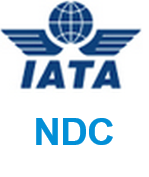- Have any questions?
- Office: +1 (650) 345-8510
- Mobile: +1 (650) 576-6916
- norm@traveltechnology.com
NDC A Different Perspective
The Open Booking Debate
March 5, 2014
Intelligent Travel Assistant Update
August 6, 2014
There has been a great deal written about IATA’s New Distribution Capability (NDC). Essentially NDC is an XML standard designed to allow airlines to deliver dynamic content and price based on a traveler’s value. It shifts control over pricing from a traditional published process to a dynamic repsonse controlled by the airlines. NDC has created a lot of controversy. Major concerns include a lack of fare transparency, customer privacy issues and the lack of collaboration with current distribution players. The Open Allies for Airfare Transparency (OAAT), a coalition of 400 independent distributors and sellers of air travel, corporate travel departments, travel trade associations and consumer organizations was formed specifically in response to NDC. Airlines want more control to deliver dynamic content (bundled and unbundled ancillary services) and even price targeted to their customers in a bid to differentiate their services and enhance the travel experience. Distributors are concerned about consumer’s ability to do comparison shopping, the misuse of their private information and about their role in this new distribution environment.
I am not going to debate the issues around NDC, but instead I wanted share a different perspective on why collaborative efforts, perhaps using NDC as a springboard could benefit airlines, distributors and ultimately customers!
At the heart of a personalization effort is insightful data. Merchandising is not just about presenting differentiated products, but matching those products with actionable intelligence about the customer. Airlines are investing in systems that go beyond loyalty to truly track customer behavior and value, but limited to direct channels. How can this be done through distribution? Not only is it imperative that the industry technology providers address this issue through distribution, but airlines also need to recognize that distributors whether GDS, OTAs or TMCs have a unique and valuable perspective for the airline. Simply put, it is distributors that understand the full 360 degree view of the customer. Distributors can know when the business traveler deviates from their normal preferred carrier and takes a competitor due to price or schedule advantage. It is the distributor that understands the full breadth of shopping performed by the traveler. Airlines need to find a way to incorporate this insight into their merchandising efforts.
Travel distribution is all about efficiency. The reason why many travel agents continue to use cryptic GDS formats is a belief that it is simply more efficient. The GDS have worked hard to create GUI environments that maintain this efficiency while enhancing the user experience with multimedia to help sell enhanced product offerings. What has not been done is to leverage information to deliver personalized offers to travelers through distribution. The major OTAs are working on systems to deploy actionable intelligence. Metasearch engines are also capturing tremendous insight into customer shopping patterns. TMCs understand the balance between customer preferences and managed travel priorities. All these sources have deep customer insight, but no one has developed a solution to bring that insight back to the airlines to allow them to truly delivery customized offers though distribution.
As IATA launches NDC pilots with airlines and distributors, the next question that will arise will likely be whether distributors will be paid to sell airline ancillary products. This is the wrong question. It is doubtful the airlines will be willing to share in this revenue. In fact, asking this question reinforces the old model that distributors should get a piece of every transaction. We are in a new world where customer insight and actionable data is the most valued part of the travel planning, booking and purchase process. This insight can be monetized.
NDC provides an opportunity to radically change airline distribution by putting a value on customer insight. Now is the time for a fresh approach to airline distribution that delivers value to all parts of the ecosystem, while providing new sources of revenue based on the value of each of the players. NDC can be a catalyst for this new ecosystem provided the players can adjust their perspectives, revenue models and use technology to deliver true customer insight. If we maintain the status quo and battle over bypass, the ultimate victor will be the company with the most rich customer data. That may end up being Google, Apple, Amazon or Facebook rather than an OTA, GDS or TMC.

